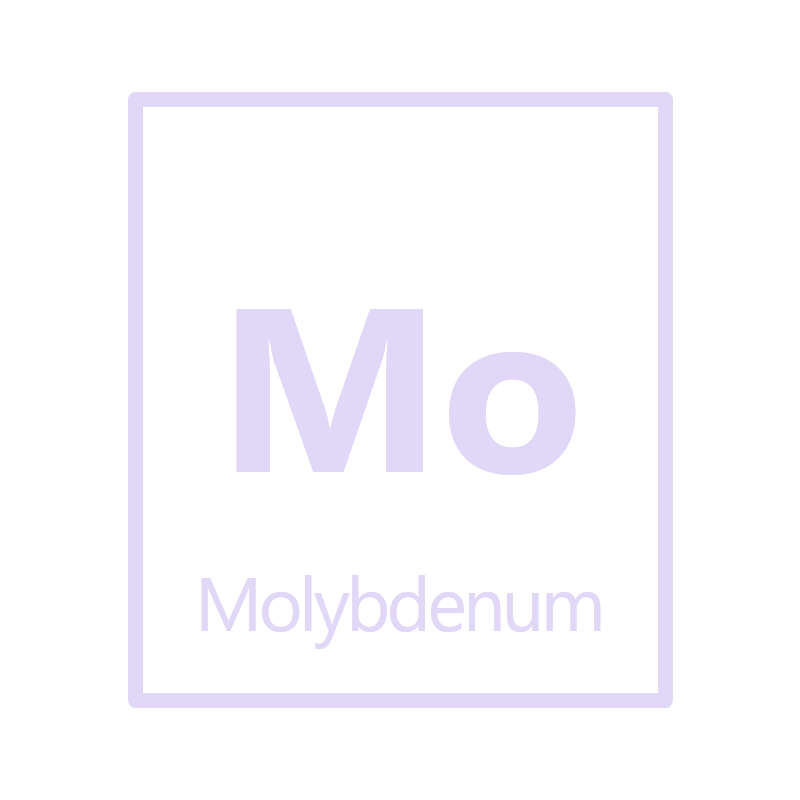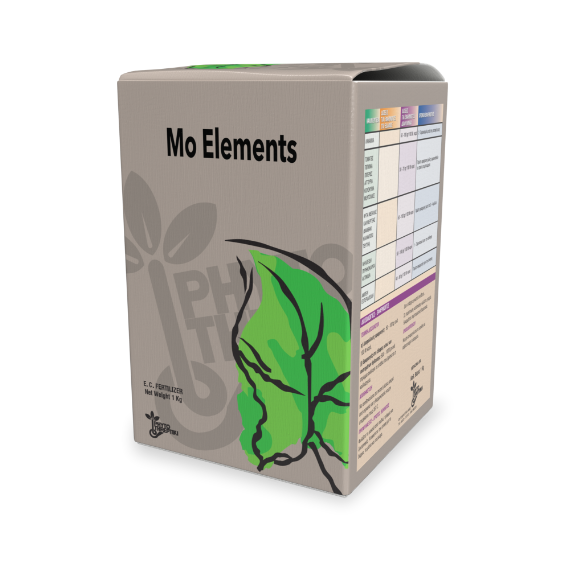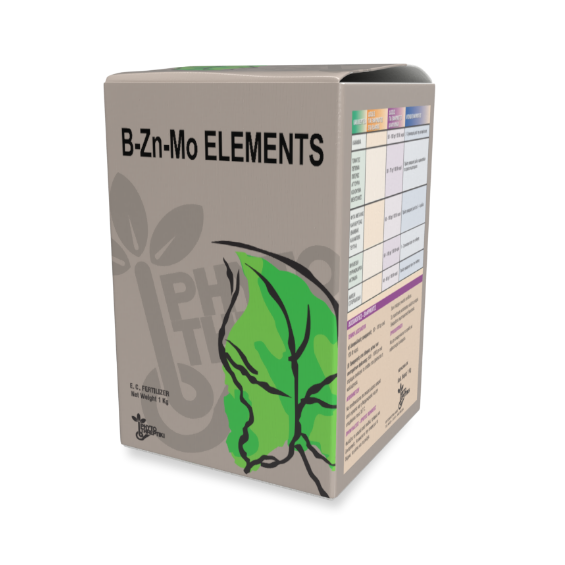
Molybdenum (Mo) is considered one of the most essential and necessary trace elements for plant growth, although plant requirements for it are lower than any other nutrient. It plays an important role in the enzyme systems involved in nitrogen metabolism and, unlike the other trace elements, molybdenum is a mobile element. It can be applied to crops by different methods in the form of different fertilisers. Legumes, cruciferous plants and vegetables are considered crops that are highly susceptible to molybdenum deficiency.
1. Basic functions of molybdenum
In higher plants, the majority of molybdenum as an essential component is found in the enzyme nitrate reductase, which is present in the cytoplasm of meristematic cells. Young leaves and root tips are rich in this enzyme. The need of molybdenum in plants is influenced by the form of inorganic nitrogen that is available to the plants. If plants ingest ΝΗ4+ or ΝΟ2–, then the need for molybdenum is less than the NO3+ intake. Higher plants assimilate most of the nitrates, which are absorbed by their root system, into organic nitrogen compounds. The first step in this process is to reduce nitrates in cytosol; namely the reduction of nitrates to nitrites.
Firstly, the enzyme nitrate reductase catalyses the reaction of the conversion of nitrates into nitrites during the process of their assimilation by the plant cell:
NO3– + NAD(P)H + H+ + 2e– → NO2– + NAD(P)+ + H2O (1)
Nitrite (NO2-), however, is an extremely active and potentially toxic ion. Thus, the plant cells immediately transfer the nitrite produced by the reduction of nitrates from the cytosol to the leaf chloroplasts and root plastids, in order to avoid its contact with the cell nucleus. In these organelles, nitrate reductase converts nitrite ions into ammonium according to the following reaction:
NO2– + 6Fdred + 8H+ + 6e– → NH4+ + 6Fdox + 2H2O (2)
In addition, nitrogen-fixing bacteria of the genus Rhizobium have been found to respond to molybdenum fertilisation. The reason for this positive correlation between nitrogen-fixing bacteria and molybdenum is that this element is a key component of the enzyme nitrogenase, which catalyses the conversion reaction of atmospheric nitrogen to ammonia.
2. Availability
Molybdenum is available in the soil in the following forms:
- Available as a Mo-2 molybdate anion the soil solution.
- Bound form in soil colloids (iron and aluminium oxides/peroxides).
- Complexed form with organic matter.
The form that is most available for plant nutrition is the water-soluble form present in the soil solution. The availability of molybdenum is influenced by a number of factors. The main ones are:
- Soil pH. Unlike most trace elements, the availability of molybdenum increases proportionately with the pH. Thus, molybdenum deficiency occurs predominantly in soils with a low pH.
- Organic matter. Somehow, the presence of an organic substance can also increase the availability of molybdenum in soils with low pH.
- Interaction with other elements. The available molybdenum is reduced in the presence of high concentrations of zinc (Zn), copper (Cu), nickel (Ni), and sulfur/ sulphur (S). In contrast, soluble phosphorus (P) is positively correlated to molybdenum.
3. Molybdenum deficiency
Molybdenum is a mobile element within the plant, therefore the symptoms of its deficiency first occur in older leaves. All symptoms associated with molybdenum deficiency are closely related to the metabolism of nitrogen. If the activity of nitrate reductase is significantly reduced, toxic nitrate ions will appear in the leaf cells. The most common symptom is chlorosis, which first occurs in older leaves and then in younger ones. In some plant species, the leaves become curled and then necrotic. In addition, molybdenum deficiency makes plants more susceptible to abiotic stress.
4. Examples in crops
Molybdenum deficiency is more observed in legumes, cruciferous plants, vegetables and some cereals. Here are some examples of molybdenum deficiency in various crops.

5. Tips for preventing molybdenum deficiency
Firstly, we suggest that you conduct a soil analysis of your field every two years, so that you have a complete picture of the nutrient levels. Compare your yield goals with the availability of your nutrients and discuss the available options with your agronomist. It is important to apply the right amount of molybdenum, at the right rate, always using the right product, as there is a fine line between nutrient deficiency and toxicity. Molybdenum can be applied to crops by different methods in the form of different fertiliser sources:
| Source | Chemical formula | Content % |
| Sodium molybdate | Na2MoO4 · 2H2O | 39 |
| Ammonium molybdate | (NH4)6Mo7O24 · 4H2O | 54 |
| Molybdenum trioxide | MoO3 | 66 |
| Molybdenum disulfide | MoS2 | 60 |
Sodium molybdate (Na2MoO4; 2Η2O) is the main source in a complete range of our molybdenum-containing products.

Mo – ELEMENTS® is a specialised, high quality molybdenum fertiliser in solid form. It contains sodium molybdate (39%) and it can be applied to all crops, including cereals, vegetables, legumes, vines and trees. The typical recommended dose is 100 – 150 gr / stremma.

B-Zn-Mo ELEMENT® is a more complete formulation of our company. This product is a mixture of trace elements and macroelements, as it contains 15% phosphorus (P2O5), 10% potassium (K2O), 8% boron (B), 2% molybdenum (Mo) and 3% zinc (Zn) EDTA. More information about the detailed product use guide can be found in the “Products” tab on our website. Lastly, the following table shows the application stage of molybdenum products per crop.
| Crop | Application stage |
| Cereals | 3 – 5 leaves |
| Vegetables | 2 – 4 leaves |
| Legumes | One application per year |
| Tree crops | One application per year |
| Vines | Application before flowering |

